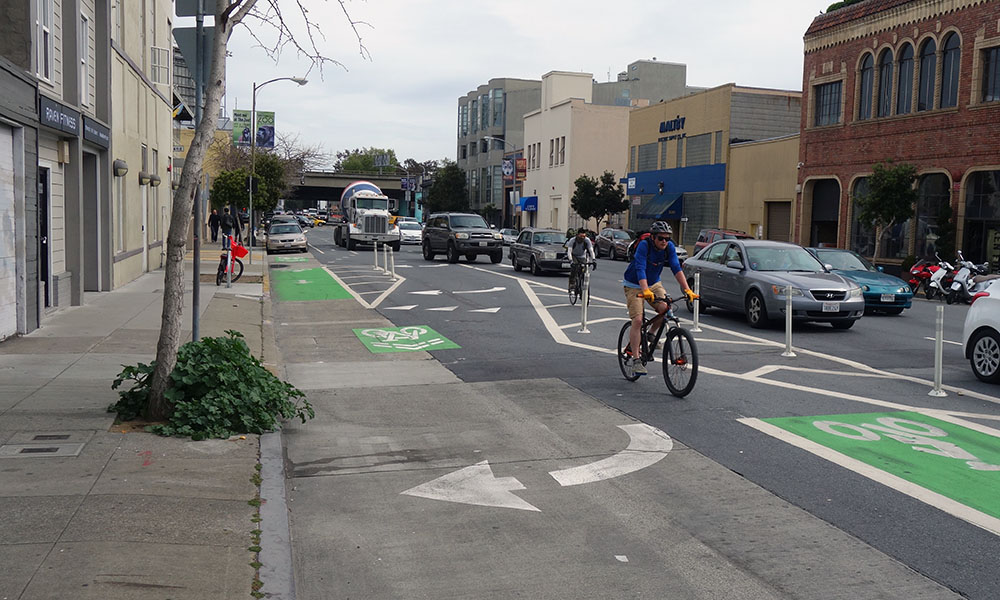At two open houses last month, SF Bicycle Coalition members saw many of the things they’ve been asking for Folsom and Howard streets revealed in the long-term transformation of both of these key SoMa corridors. Now it’s time to dig into the designs.
We know intersections are where most conflicts occur when you’re biking. Members were particularly thrilled to see innovative intersection design proposed for Howard Street. “I always come to these open houses asking them to get rid of the mixing zones,” commented member Laura Joose. “But look, no mixing zones!”
What is a mixing zone? That’s the portion of a bike lane leading up to an intersection where the lane drops, or becomes hashed, and bikes and turning vehicles mix. For as long as there have been bike lanes, mixing zones have been some of the toughest spots to navigate, especially in SoMa where big trucks and large traffic volumes can clog up the streets.
The reason that Laura was so excited is that the designs for the Folsom and Howard Streetscape project include fully protected intersections all along Howard, creating safe intersections for people walking and biking. Along with a two-way protected bike lane on Howard, these designs will fundamentally change how people riding get around SoMa.

Let’s look at how the intersection of Seventh and Howard will go:
- A 14-foot, two-way bike lane and new bike signals will allow people riding to go east and west on Howard.
- People riding west on Howard turning right onto Seventh will queue, protected by an island before using the main signal to cross, well ahead of vehicle traffic.
- People riding east on Howard turning left onto Seventh will yield to oncoming bike traffic before queueing in the same area and using themain signal to cross.
This is a new type of intersection for biking in San Francisco, and admittedly, a lot is going on. To succeed, bike riders will need to slow down and yield to pedestrians and other people biking. With this behavior shift, though, we’ll see a safer intersection for everyone.
Although European cities are known for this design, we only have to look as far as Chicago to see that this exact layout works on downtown streets in the US. Our hope is that soon, similar intersections will be found throughout SoMa.

Protected intersection at Randolph and Dearborn in Chicago


